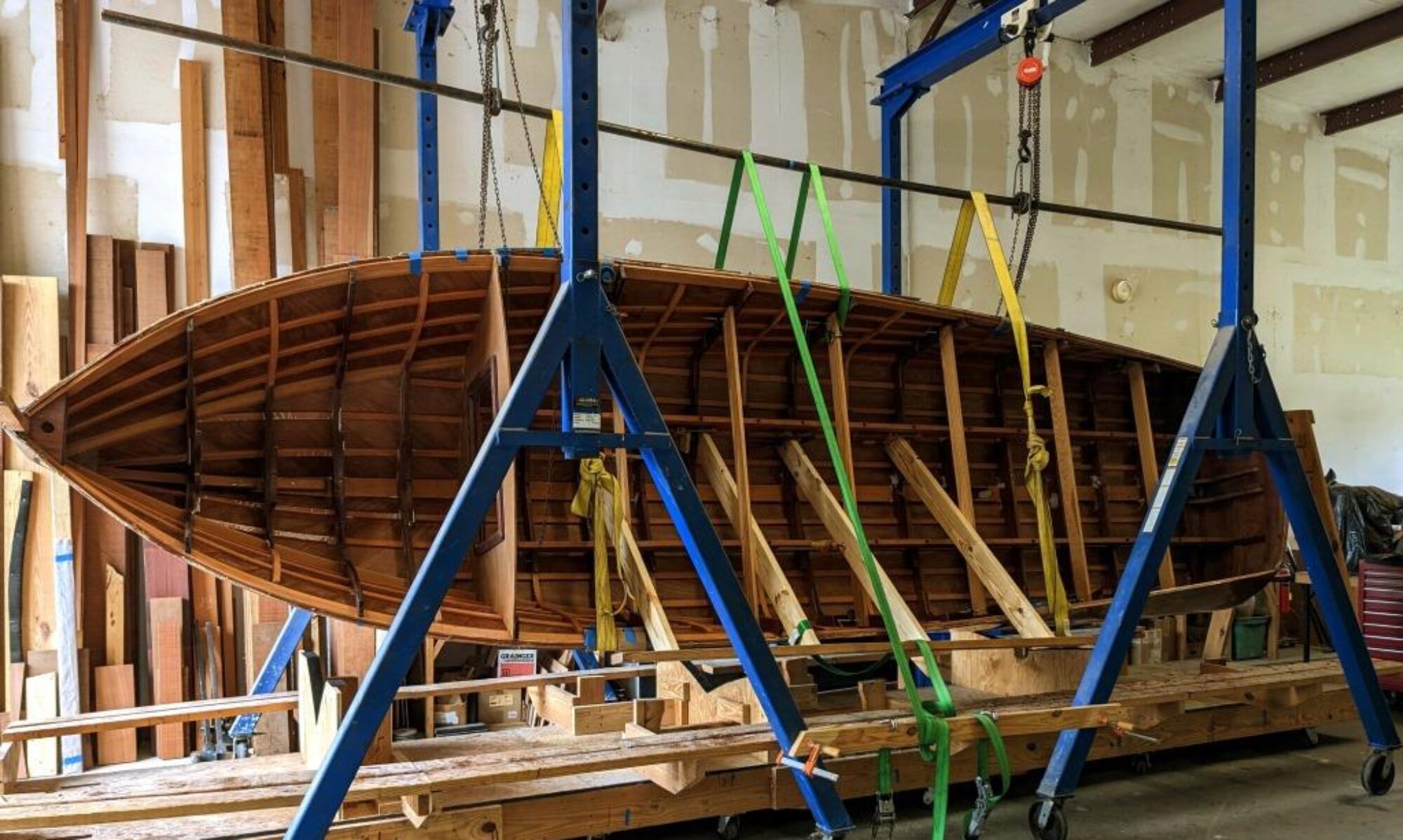
I’ve done all I can to the hull from the outside. So it’s time to flip the boat upright so I can start working from the inside. To prepare for this, I’ve made 3 cradles to hold the boat in position once its upright. I used the patterns for some of the frames with one placed directly under where the engine will be mounted. Using the waterlines on the patterns, I was able to set up the cradles so the boat will sit level and plumb.
Way back, when I built the strongback, I put it on casters so I could move the boat around the shop if I needed to. So it was a simple matter of unblocking it and rolling it over under the gantry cranes I use for flipping boats.

When I was at school in Maine, we had a special gathering of all 100 or so students when it was time to flip the boats we were building. We just got everyone to grab hold somewhere around the boat and tilt them up and flip them over. Since I don’t have 100 folks (okay, I’d probably only need about 20-30 really) I’ve come up with a way to flip boats single-handed. I suspend a 2 inch black iron pipe between two gantry cranes. I had a local fabricator make up a couple of bearings I could hang from the chain falls so the pipe will roll. I throw a couple of 4 inch load straps (the kind truckers use to tie down loads on a flatbed) over the pipe and tie them around the boat.

First I lift the boat up off the legs of the strongback and remove all the bracing for the legs. Then I cut off the legs below the level of the cradles which are already in place. Now comes the tricky part. It’s pretty easy to start rolling the boat in the straps. But at a certain point, gravity takes over and it want to go sideways. And of course that’s how it wants to stay. The trick is not to let it get away from you when this happens, and to have the boat high enough so it won’t hit anything underneath if it does happen to go a little faster than you planned. I fastened a green load strap to one of the gunwales and wrapped it about three times around part of the strongback so I could easily hold against it and ease it down. If you’ve ever held a boat at a dock by wrapping the line around a dock cleat, you know how this works.

Then I lower it onto a prop along one of the gunwales that I’ve put in place, making sure to rock it so it continues to turn over. Continue lowering until it is upright enough to lift the near gunwale into an upright position. It helps to have a few people on hand who can help you lift it. It’s heavy, but if you let the weight of the boat do the work, It ain’t that hard.


Looks great Tim. A really exciting stage ( one of those “what could possibly go wrong moments!).
Very glad it went smoothly. ????